From:the world's most visited architecture website.

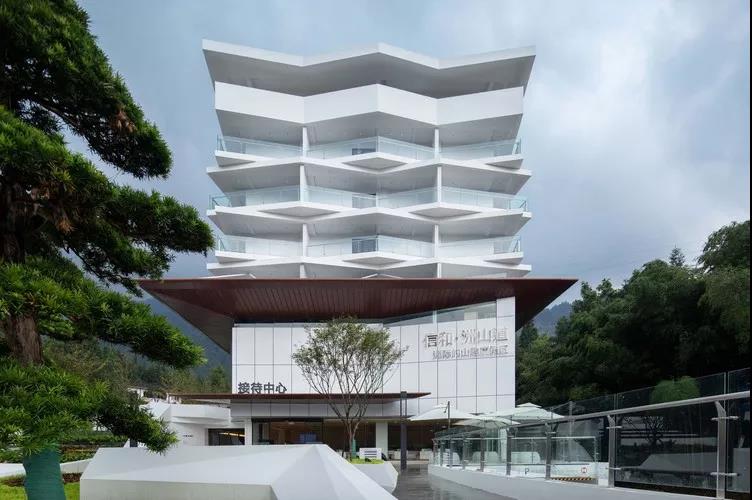
© Arch-Exist
Text description provided by the architects.
As one of the four greatest Buddhism mountains in China, Mount. E’mei has been rated as the World Heritage of both nature and culture by UNESCO (United Nations Educational, Scientific, and Cultural Organization) since 1996. Qiliping is located at Hongya, Meishan, Sichuan. Qiliping is a part of Mount. E’mei. With about 1,300 meters of elevation, and only 26 kilometers from Golden Peak, the top of Mount. E’mei famous for the fabulous view it has, Qiliping is commonly known as a platform for viewing Golden Peak from distance. Having 300 square kilometers of forests in the surrounding mountains, 90% of the area of Qiliping is covered with trees. The average temperature in Qiliping during the summer is 24, which is about 5 to 8 lower compared to the urban area. More interestingly, an average of about 18,000 negative oxygen ions exist in per cube centimeters of air in Qiliping, which is 400 times more ample than the urban area. The tourism project “Zhoushandao” takes up 43.5 acres of land with 76,000 square meters of building area consisted of a main hotel building, 17 apartments, ridge clubhouse, and some hilltop villas. The hotel, Holiday Inn Express E’mei Qiliping, is the symbolic architecture of the project. As the biggest and the most wide-spread hotel management group in the world, InterContinental Hotels Group PLC (IHG), the introduction of its subsidiary, Holiday Inn Express, to Qiliping successfully fulfils the shortage of high-quality and international hotels of the region.

© Arch-Exist
Holiday Inn Express E’mei Qiliping is located at the center of Qiliping. To the south of the building is main entrance connecting to the main road of project Zhoushandao. The road connects to E’hong Road in the east, and its west leads up to the hilltop of the project. To the north of the hotel is a singing creek and a small hill with bamboos and trees that can reach the fourth floor of the building.The main building of the hotel is of a cubic structure with five floors aboveground and 2 floors underground. The architecture is of 19.80 meters in heights, 81.75 meters length, and 22.40 meters in depth. Its building area is about 9738.92 square meters with 162 guest rooms.
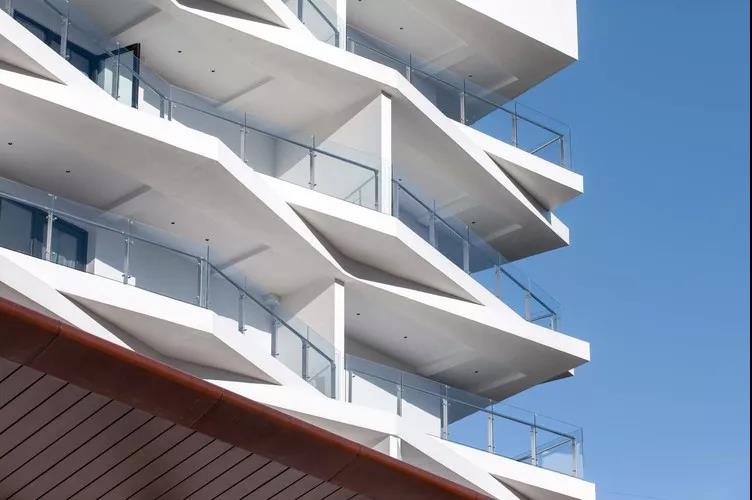
© Arch-Exist
Most parts of the façade of the architecture is formed by the disposition of jagged white belts. Cut by a broad rain shed of wood-like material, the lower part of the building is two-floor-high void space that is made into public space.
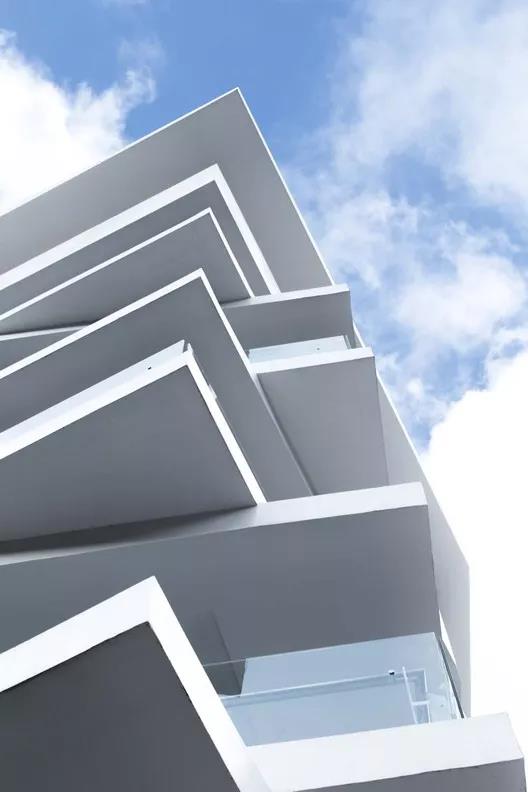
© Arch-Exist
What inspired the architect to choose white as the main color of the façade is the Davidia Involucrata flowers, as a few of them can be seen at the project site. As a special plant that exists in Mount. E’mei, Davidia Involucrata is one of the Chinese National First-class Protected Plants. Every year during April and May, the trees blossom with flowers that have two big white petals that flies like pigeons with a breeze.Therefore, Davidia Involucrata is also known as the “Chinese Pigeon Trees.”

© Arch-Exist
The most distinct part of the architecture, the disposition of jagged façade, forms the balconies that allow each guest room to have a space that gets into nature. Other benefits of the disposition are that it allows each guest room to be free from the interference of rooms nearby, and more importantly forms the major symbolic appearance of the architecture.Following the shape of the architecture, guest rooms are located along the north and south sides of the building.
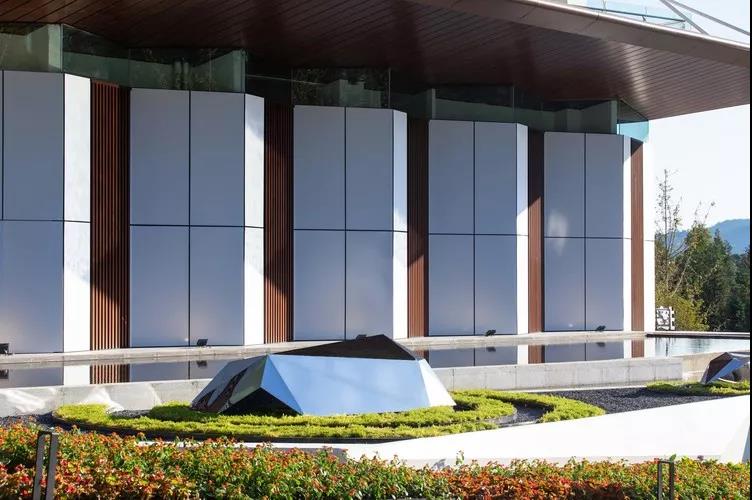
© Arch-Exist
Southside Guest Rooms:
The southside guest rooms are in a position that can directly look upon Golden Peak. They also show a design thinking of “Origin of Natural”. Looking out of the windows from southside guest rooms,a green wild scene would be seen. When it is sunny, guests can even see the gigantic gold buddha sitting and shining with the sun.

© Arch-Exist
How delightful a view is when it is a combination of both nature and culture! This creates such a nice place to sit down and meditate. Placing oneself in the middle of a mountain with the visible influence of Buddhism, one can set its mind free into thinking about the origin of oneself, of nature, and of life.
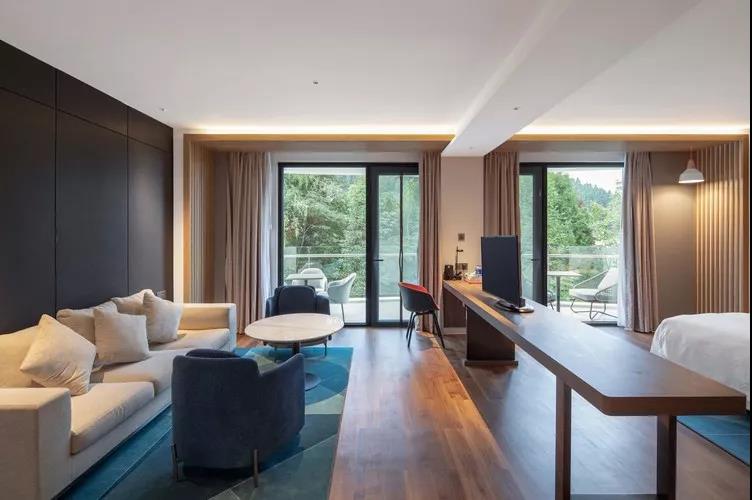
© Arch-Exist
Northside Guest Rooms:
Different from the distant view that can be seen at the southside guest rooms, the northside guest rooms are closer to nature. Opening the balcony door, one can hear the creek singing right underneath him.One can even seem to reach his hands onto the bamboos on the balcony. Sitting down at the balcony and looking up, one can see a line of the bright blue sky between the bamboos and the architecture.Looking down from the balcony, the clear creek slowly drips along. Locating at this spot, the architecture seems to become an organic that is nourished by water.

© Arch-Exist
People may be reminded of the famous piece by the master architect Frank Lloyd Wright: The Falling Water. The architecture is located in the mountain, with a creek dripping across it underneath and tress covering its top. Such organic architectures so much appreciated by the master blend into nature, grow from the soil, and appear to be alive. This architecture shares these traits as well.
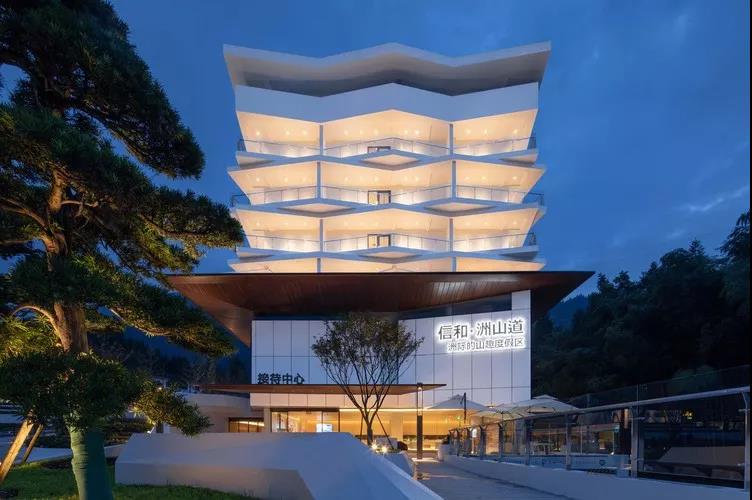
© Arch-Exist
